Overview
Vs Thermal Temper Glass
Mechanical Strength
Chemical Strengthen Glass Is Much Stronger Than Thermal Temper Glass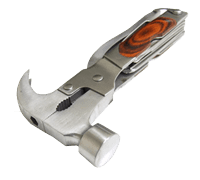
Chemical temper glass is 15 to 20 times stronger than ordinary float glass while thermal temper glass is only 3 to 5 times stronger. Surface compression of chemically strengthened glass goes up 600 N/mm2 (MPa) while thermal temper glass is only 90 N/mm2 (MPa). Chemical strengthened glass is always used for some industrial or architectural applications where mechanical resistance needs to be higher than usually obtained by thermal tempering.
Flexural Bending Strength
Bending Strength Of Chemical Toughening Glass Is Much Higher Than Thermal Temper Glass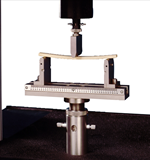
Central tension of chemical strengthen glass is very low while thermal temper glass could be as high as 45 N/mm2 (MPa). Thus, bending strength of chemically toughened glass is higher than thermally heat tempered glass. When chemical strengthen glass is hit by external force, it absorbs the force and rebounds. This is particularly obvious when glass is thin and long, for example, 1mm.
Scratch Proof
Scratch Resistant Is Another Characteristic Of Chemical Strengthen Glass Overriding Thermal Temper Glass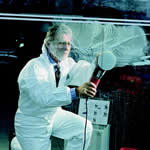
- Chemically tempered glass surface is re-structured. It is stronger and resists scratch. Thermal heat temper glass is not good at scratch resistance.
Thermal Stability
Chemical Toughening Glass Resist Much Thermal Shock Than Thermal Tempered GlassChemically strengthened glass resists higher thermal shock than thermally tempered glass.
Optical Property
Unlike Thermal Tempering Process, Chemically Strengthening Does Not Spoil Glass Optical Properties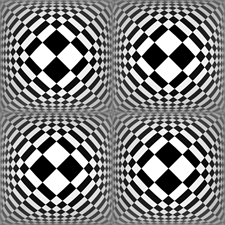
In thermal tempering, glass residual stress is obtained through transitory thermal gradients which occur over glass softening temperature while glass is chemically strengthened far below softening point. Moreover, glass during chemical strengthening standstills and is not driven by roller mechanism. Chemical strengthen glass is absolutely free of optical distortion. The optical property is as excellent as float glass. Thermal tempered glass is bow when it is moving inside tempering furnace under softening temperature. This results in poor optical characteristic. Chemical strengthen glass is very popular for applications in industrial or automotive sectors where there are high optical requirements or where no superficial glass distortions are allowed.
Geometrical Distortion
Unlike Thermal Temper Glass, Chemically Toughening Glass Is Free Of Deformation- Glass is geometrically distortion free if it is chemically strengthened. The chemical reaction does not affect glass geometric shape. Physically thermal tempered glass is always geometric distorted. Glass distortion is more serious when tempering parameters are not properly set.
Glass Flatness
Chemical Strengthen Glass Overcomes Wavy Problems Created During Thermally Tempering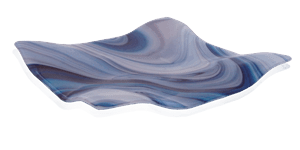
Ion exchange is taken place at temperature far lower than glass softening point. Glass is still and does not move inside the bath tank. In thermal tempering, glass moves to and fro on conveying rollers at temperature close to its softening point. Wavy glass is occurred. Chemical strengthen glass is as flat as float glass before strengthening.
Roller Marks
Ion Exchanging Bath Is Roller Free DesignGlass is standstill inside tank bath. There is no roller or any conveying mechanism. Chemical strengthen glass is absolutely roller mark free.
Minimum Glass Thickness
Thermal Tempering Process Has Limitation In Thin Glass While Chemical Process Is Applicable In Any Glass Thickness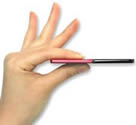
When glass thickness is less than 2.5mm, thermal tempering is almost impossible. However, there is no thickness limitation on chemical strengthening. Glass as thin as 0.5mm is always done by chemical strengthening. This is particular important for thin glass flat panel display (FDP)
Glass Weight
Chemical Strengthen Glass Is Light While Thermal Temper Glass Is Heavy If Both Have Same Mechanical StrengthsIf high mechanical strength is required while weight is also a major concern, chemical strengthen glass is the only choice. Higher mechanical strength of thermally tempered glass is obtained only when glass is thick enough.
Glass Shape
Any Glass Shape Could Be Chemically Strengthened While Thermal Temper Glass Is Limited In Shape
Single, double or compound curvatures of glass could be toughened chemically. Certain complex curvatures or dimensional characteristics make thermal toughening impossible.
Minimum Glass Size
Unlike Thermal Tempering, Chemical Strenthen Glass Has No Limitation In Min. Glass SizeMinimum glass size at thermal tempering is limited by rollers distance. In chemical strengthening, there is no limitation in minimum glass size.
Bend Temper Glass
Complex Bend Tempered Glass Is Always Done By Chemical Strengthen Process After Ordinary Bending & AnnealingMost of bend temper glass is made by bending and tempering furnace with thermal process. The curve shape is either made from gravitation or pressing process. When it is made by force of gravitation, the repeatability accuracy is low. Glass curvature is not precise piece by piece. Mould marks may occur especially at glass edges. When it is made by pressing, pressing marks may occur.
Bend temper glass could be made by chemical strengthen process. Glass is firstly bent by ordinary bending oven. Then the curve glass is put inside the ion exchange bath for chemical strengthening. The curve glass is absolutely distortion free during chemical reaction. Repeatability is precise and no marks are found.
Laminated Temper Glass
Perfect Chemical Strengthen Glass Shape Conformation Allows Perfect Glass LaminationThicker PVB or EVA interlayer are always employed when laminating temper glass irrespective it is flat or bend glass. This is because flat temper glass is wavy. For bend temper glass, it is made piece by piece. The repeatability of glass curvature is poor. Gaps between are always found when two pieces of bend tempered glass are lay on each other. Immediately after laminating and autoclaving, the laminated temper glass may be found no de-lamination. However, de-lamination begins occur and bubbles are formed after the glass is installed.
When glass is made by chemical ion exchange process, two pieces of flat glass are lay on each other and are put inside ordinary bending oven. Since the two pieces of glass are bent at the same time under identical heating and timing parameters, their shapes conform to each other precisely. This is exactly the process making laminated windshield. No gap is found between the two pieces of glass. The two pieces of glass are then chemically strengthened which does not distort the glass shape. Then they are laminated. No thicker PVB or EVA films are required. No de-lamination nor air bubbles are found.
Glass Cutting
Cutting Does Not Damage Chemical Strengthen Glass While Thermal Temper Glass Breaks At CuttingCutting of chemical strengthen glass is permitted with proper cutting tools and breakout skills. However, Glass cutting is always done before thermal tempering.
Easy Site Work
Site Work Is Easier With Hgh Flexual Bending Strength & Cuttable Chemical Strenthen Glass
Due to its excellent flexural strength, chemical strengthen glass would be easily installed without breaking risk. This characteristic is obvious when installation requires twisting force exerting on glass. Stiff thermal temper glass may break when similar force is applied. Cutting of chemically strengthened glass can be performed with proper cutting tool and breakout skill. This allows flexible installation at site. However, cutting on thermally heated tempered glass would destroy the glass.
Installation Cost
Thin Light Glass Always Costs Lesser Than Heavy Thick Glass In Terms Of Installation & FrameworkChemical strengthen glass is thin and light. To obtain the same strength and properties, physical heat temper glass is thick and heavy. Heavy duty and thus costly framework structure is required.
Broken Glass
Unlike Small Broken Thermal Temper Glass, Chemically Strengthened Glass Is Broken Into Large PiecesWhen chemical strengthen glass is broken, it fractures in large pieces but is still hold within framework. The broken pieces are not as sharp as non-toughened glass. However, thermal temper glass is broken into little blunt fragments which fall out of frame easily. Subsequent injuries may occur.